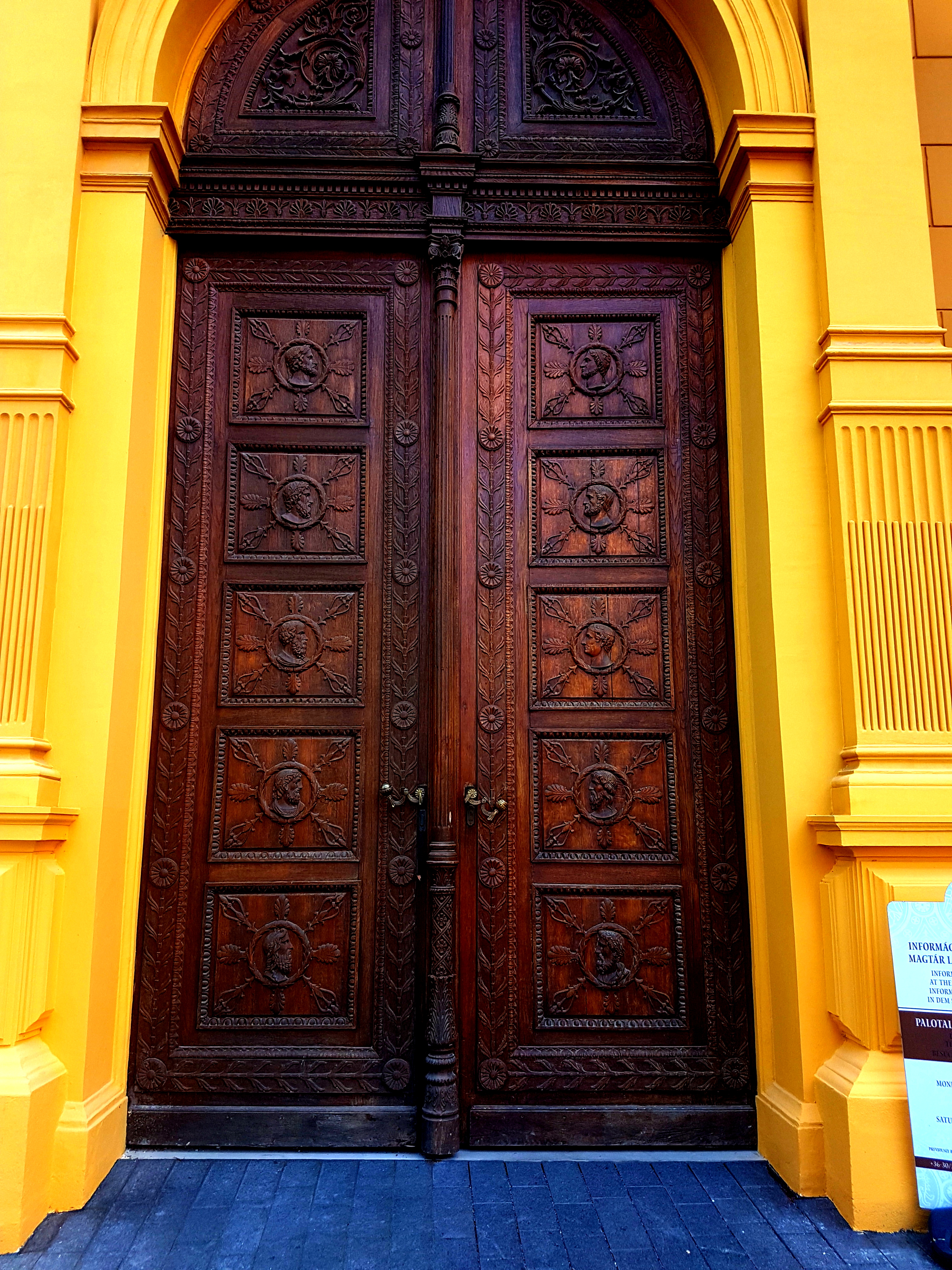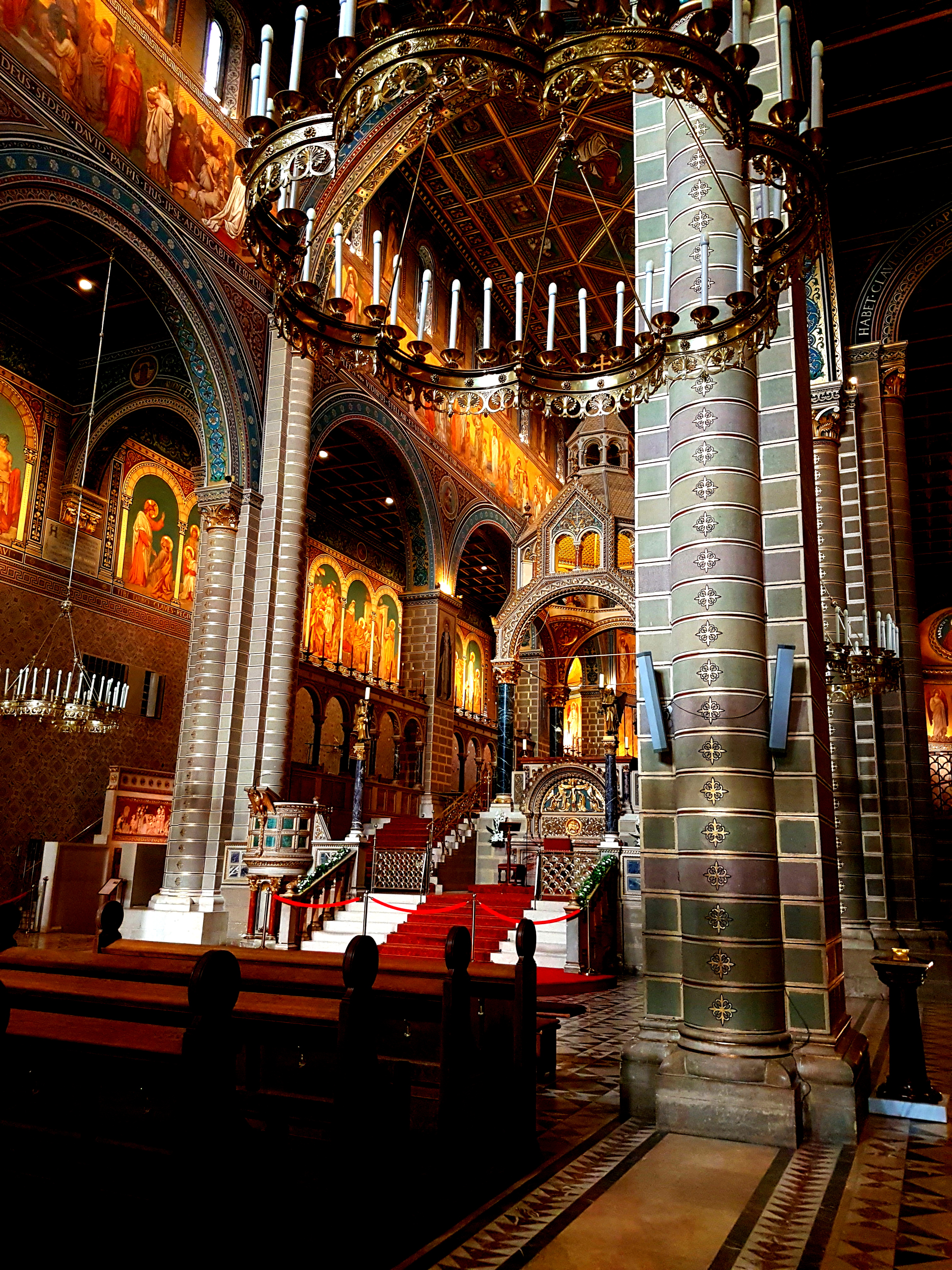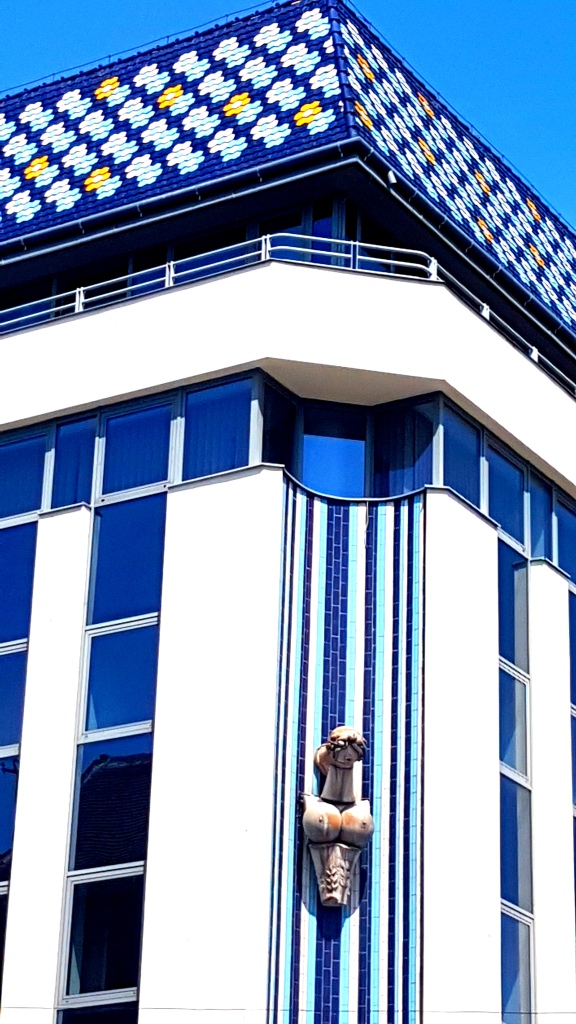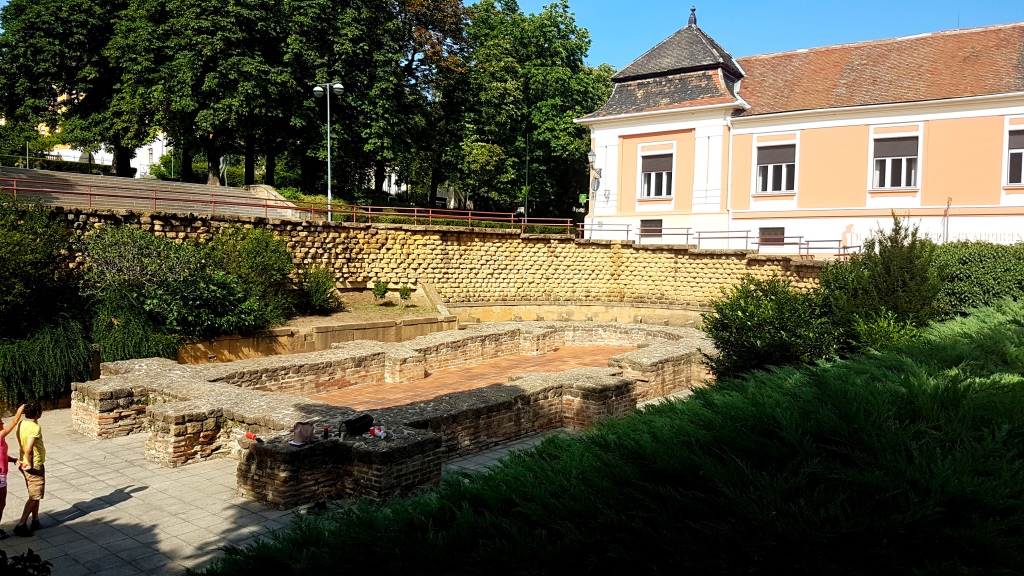Long story short, my travel companion had been hospitalized in Austria, and I was now alone in her friend’s summer house in Dombovar, a small town in central southern Hungary, more or less in the middle of Southern Transdanubia. I had spent an unexpected night in Budapest, at the only reasonably priced accommodation I could find – in what had been the monks’ accommodation cells at a monastery. The quality of the accommodation hadn’t improved since the days of the monastery, but the uncovered, awfully thin mattress was preferred to paying ridiculous prices for a hotel. It turned out that the Hungarian Grand Prix was on that weekend, hence the lack of available accommodation, and the crazy prices for what was available. A plus: the staff were great, and the communal bathroom had hot water.



Dombovar – the pretty, but taxi-less train station
I arrived by train in Dombovar, equipped with the address and where to find the keys. And then I discovered that my one word of Hungarian: ‘igen’, meaning ‘yes’, wasn’t going to get me far, and wasn’t going to get me a taxi. I found out, in the week to come in Dombovar, that my lack of Hungarian, when trying to call a taxi by phone, always had the instant result of the phone being hung up. The house was a good way from the station, and I was seriously considering walking (thank goodness for Google Maps), when a young man came up to me and asked if he could help. Oh yes please. Taxi? No go, he shook his head, but no problem, he’d drive me there. His name was Patric – I will be forever grateful to him for that favour.



Exploring Dombovar
The cellar had a collection of ancient bicycles, which my hostess had said I was welcome to use – I chose the one that was easiest to extract from the bike pile; one of those really old-heavy-as-4-modern-bikes models, and somehow got it out of the cellar. My mom had always believed that brute force and bloody ignorance was a good alternative if finesse didn’t work – she was right in this case. I explored Dombovar, and having found my way around a few days later, I was now back at the station. My bike was parked, and now all I needed was a return ticket to Pécs, a city further south. The lady at the ticket counter had no idea where Pecks was. I eventually wrote in down. ‘’Ahh! Petch! Igen? Igen?” “Igen!” I answered.

Hungarian Train Stations are wonderful; trains are greeted and given a send-off with the most delightful jingle, the MÁV Szignál, and the staff are in uniforms, and a cap, that reminded me of illustrations in a children’s story book. The guy on duty waves a flag, signalling if you can or can’t come across and board the train. My misunderstanding of the signals was only greeted with smiles and hand directions; probably sighs of relief too, that I hadn’t crossed in front of train.
Pécs dates back to the 3rd century CE, when it was founded by the Romans and named Sopianae. It was the capital of the Valeria Province, and was an early centre of Roman Christianity.
The Turks invaded Hungary in the 1400s, and Pécs still has many buildings dating back to that time. The largest surviving original Islamic building, the mosque of Gazi Kasim Pasha, which is now a Catholic church, named St Mary’s, stands proudly in the city centre. The Islamic decorations have been kept, and I personally think that it is wonderful to have symbols of what are often opposing religions side by side.





Once the Mosque of The Gazi Kasim, now the Church of St Mary.
Called ‘Hungary’s Mediterranean City’, Pécs was named Europe’s Capital of Culture in 2010. It is many things, apart from being a cultural and religious centre, it is also home to Hungary’s first university, built in 1367.
Blessed with over 200 of sunny days a year, a summer’s day in Pécs is hot. The walking street had had brightly coloured awnings hung over it, creating wonderful and much needed shade, and children played in the fountains. I found a shop that sold my new favourite ice cream, called Kactus, and happily wandered the streets.

Not only had Pécs been invaded by the Turks, the Mongols had also sacked the city, and had badly damaged St Peter’s Cathedral in the 1200s. St Peter’s was rebuilt and added to several times, and today it is an imposing building incorporating several architectural styles. The Bishop’s Palace, opposite it, has a statue of Hungary’s favourite musician, Ferenc (Franz) Lizst dressed in a rain coat lounging on a balcony.


The interior of St Peter’s Cathedral in Pécs.



St Peter’s Cathedral: Top: The back with its huge statues of the Saints. Bottom right: View of one tower from another tower. Bottom left: statue of the composer Zoltan Kodaly.
The Synagogue is a stark reminder of how terrible history often is. Nowadays, because nearly all of Pécs’ 5000 Jews were sent to Auschwitz during WWll, and currently has a Jewish population of only a few hundred people, it is only used for important ceremonies and as a tourism attraction. The practising Jews now use a small hall to worship in.
Pécs is also famous for its unique Zsolnay metallic glazed tiles. Founded in 1853 by Vilmos Zsolnay, the tiles are ever popular, and graced many an Austro-Hungarian Palace. In Pécs, the tiles can be seen on many buildings, but the Zsolnay Fountain, with its fresh water spouting blue-green goat heads, near the Széchenyi tér square is the most beautiful of all. Like many others, I filled my water bottle there.
Many of the buildings in Pécs were decorated with bright Zsolnay roof tiles – well why be boring?
As always, the contrast between the ancient, old and modern buildings I found fascinating. Near St Peter’s is an excavated site which dates back to Roman times, the brick work does not look several thousand years old. I watched a couple practising dance steps at the sunken ruins; it was a modern dance to hip hop music, and I thought that the contrast was quite marvellous. How many different styles of dance had those ancient flagstones hosted over the centuries? How many more dance styles will be danced there in the years to come?
Whether Budapest or a closer town is your base, take the train to Pécs, and marvel at the history in this part of hungary.



Don’t have time to read this blog? listen to it instead:












Thanks Kath. The hospitalized traveling companion. Exploring on your own can be very rewarding as you show. Lotsa luv
LikeLiked by 1 person
Igen! We just have plan another trip – there is so much to see and do in Hungary!
LikeLike